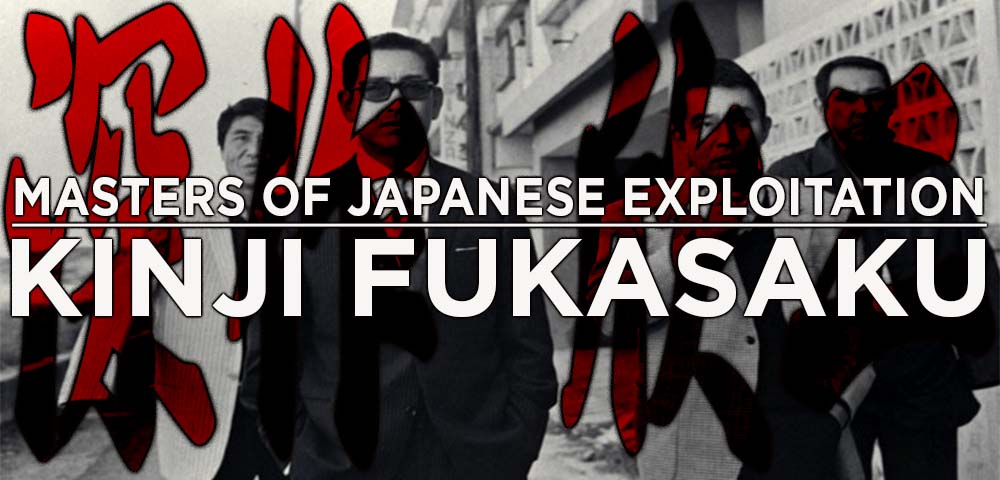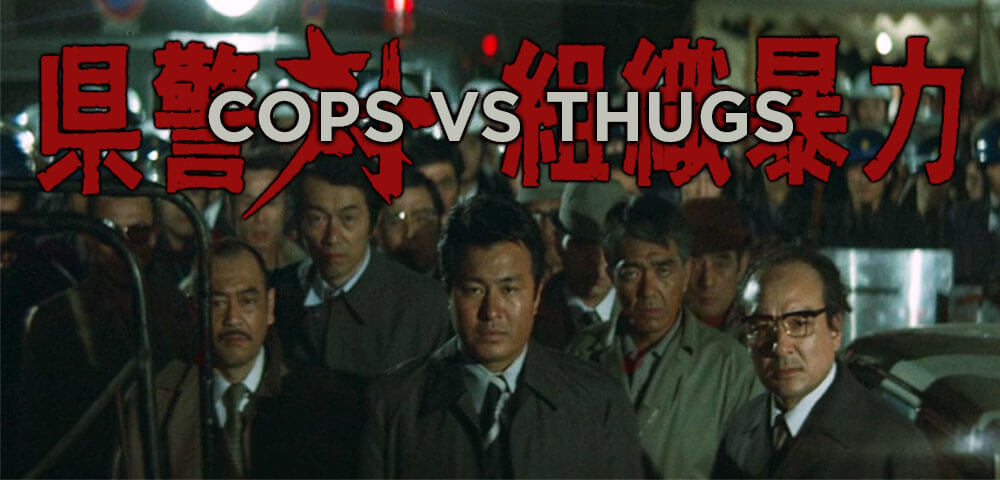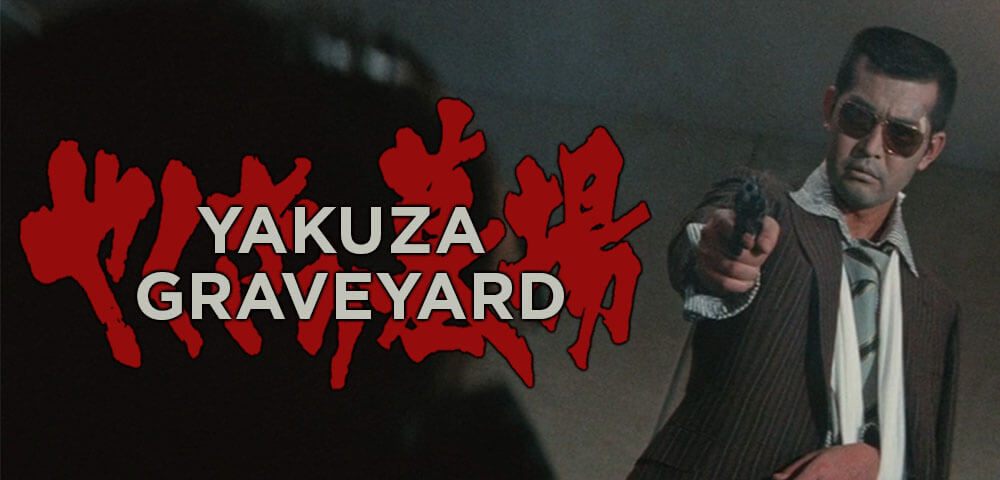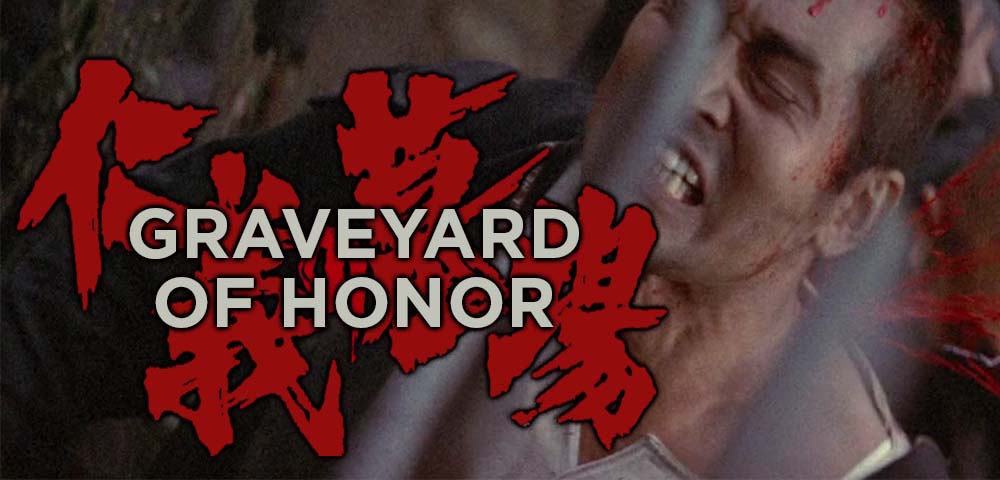
Kinji Fukasaku is often remembered in the Western world for his final finished film, BATTLE ROYAL (2000), and the legacy the film left on popular culture. However, in Japan, the prolific director was respected for a broad range of films that often used violence to make statements about social control, authority, and individual freedom.
After working as an Assistant Director at Toei Company for seven years, Fukasaku made his directional debut in 1961 with the Sony Chiba film DRIFTING DETECTIVE: TRAGEDY IN THE RED VALLEY and followed it up with a sequel the same year. During his forty-year career, Fukasaku directed over sixty movies, received three Japanese Academy Film Prizes for best director, and helped redefine many genres, most notably the Yakuza genre.
Until 1973, Ninkyo Eiga (Chivalry Films) had been the popular style of Yakuza movie. These films were often set in the Meiji or Taishō era and portrayed the Yakuza as honorable outlaws willing to fight and die to save someone. However, in 1973, Fukasaku directed the epic Yakuza film BATTLES WITHOUT HONOR AND HUMANITY, based on real-life accounts from a former Yakuza boss, Kōzō Mino. The film was set in a ruined post-WWII Japan, with the Yakuza being portrayed as ruthless gangsters who would do anything to survive, completely dissolving the chivalrous notion of the Yakuza from Ninkyo Eiga. Fukasaka decided to use guerilla-style filming, often filming scenes on live streets and using handheld cameras to intensify the extreme violence and chaos depicted throughout the film. The resulting style of Yakuza movie came to be known as Jitsuroku Eiga (Actual Record Films).
BATTLES WITHOUT HONOR AND HUMANITY became a financial and critical success, spawning four Fukasaku-directed sequels released between 1973 & 1974. Fukasaku continued the series with three movies titled NEW BATTLES WITHOUT HONOR AND HUMANITY, released in 1974,1975 & 1976. During this period, Fukasaku also directed another five Jitsuroku Eiga before leaving the Yakuza genre for good. Of these five movies, three of his best, YAKUZA GRAVEYARD, COPS VS THUGS, and GRAVEYARD OF HONOR, will be the focus of this retrospective.

COPS VS THUGS
(県警対組織暴力)
dir. Kinji Fukasaku, 1975.
Japan. 97 mins.
In Japanese with English Subs.
SATURDAY, AUGUST 3rd – 10 PM
THURSDAY, AUGUST 8TH – 7 PM
MONDAY, AUGUST 26th – 7:30 PM
The acting boss of the Ohara Family requests help from a corrupt cop to commandeer a lucrative land grab from the Kawade Family. This triggers a violent gang war between the Yakuza, the police, and the local politicians.
Many consider COPS VS THUGS Kinji Fukasakus’s greatest single-film achievement in the Yakuza genre, even earning him a Blue Ribbon award for best director. Released at the peak of the Jitsuroku Eiga boom, the film showcases a cynical social commentary in an explosive entertainment package.
The idea for COPS VS THUGS came about after the Toei studio was raided by the cops for its association with the boss of the largest real-life Yakuza gang the Yamaguchi-gumi. Toei was subsequently banned from shooting anything on location in Hirosmia. However, Toei announced its new film, COPS VS THUGS, would be the first of their movies to show the cops in a positive light, and were therefore permitted to film on location, as long as they changed the city’s name.
The final film didn’t deliver on its promise, the complex web of corruption and twisted loyalties, filtered through Fukasaku’s trademark cynical take on authority, only solidifies the notion of the cops being just another faction in the war for control.

YAKUZA GRAVEYARD
(やくざの墓場 くちなしの花)
dir. Kinji Fukasaku, 1976.
Japan. 95 mins.
In Japanese with English Subs.
SATURDAY, AUGUST 3RD – 5 PM
THURSDAY, AUGUST 8TH – 10 PM
FRIDAY, AUGUST 16TH – 10 PM
The Nishida and Yamashiro families are at war and a newly transferred cop, Kurowia, has been tasked with cracking down on their exploits. However, it’s not long before the corruption within the police makes him reevaluate his relationship with the Yakuza.
YAKUZA GRAVEYARD marks the final collaboration between Kinji Fukasaku and screenwriter Kazuo Kasahara, having worked on the BATTLES WITHOUT HONOR AND HUMANITY series, COPS VS THUGS, and a string of other Toei studio films together. Kasahara would spend time building up to a new project with real-life Yakuza, trying to perfect his characters and capture the essence of Jitsuroku Eiga, this practice earned him the title “the Shakespeare of Hiroshima Dialect”.
In 1976 Kasahara believed his work within the Yakuza sub-genre was done but decided to write YAKUZA GRAVEYARD as a response to critics who believed he hadn’t addressed the presence of Koreans in the Yakuza. The resulting film is a morally complex tale, just as gritty, violent, and beautifully chaotic as Kasahara and Fukasakus’ previous collaborations.

GRAVEYARD OF HONOR
(仁義の墓場)
dir. Kinji Fukasaku, 1975.
Japan. 91 mins.
In Japanese with English Subs.
SUNDAY, AUGUST 4TH – 5 PM
FRIDAY, AUGUST 16TH – 7:30 PM
SUNDAY, AUGUST 31ST – 5 PM
Chronicles a true story of the rise and fall of a self-destructive man through the ranks of the Yakuza.
Adapted from Goro Fujita’s gangster novel, documenting the real-life exploits of mad dog Yakuza Rikio Ishikawa, GRAVEYARD OF HONOR might be Fukasaku’s bleakest most nihilistic Jitsuroku Eiga. Whereas other films in the genre might hint at a protagonist with a sliver of honor and respect, there is none to be found here. Tetsuya Watari, who five years previously was still playing the chivalrous Yakuza lead in many Toei productions, couldn’t be further removed from these roles. He plays the angry, rabid, and self-destructive Ishikawa with such ferocity that even the most hardened audiences might have trouble sitting through this onslaught of the senses.
